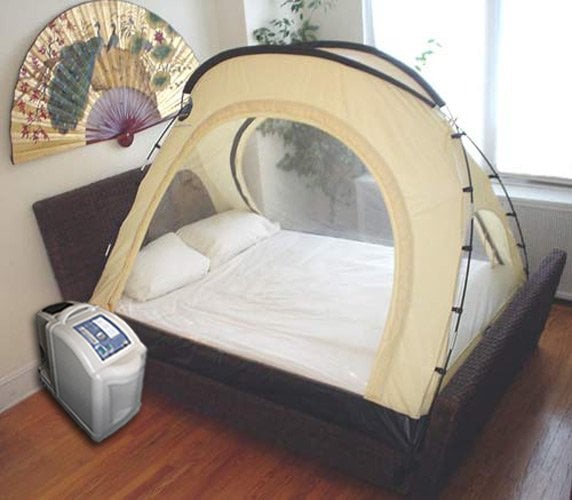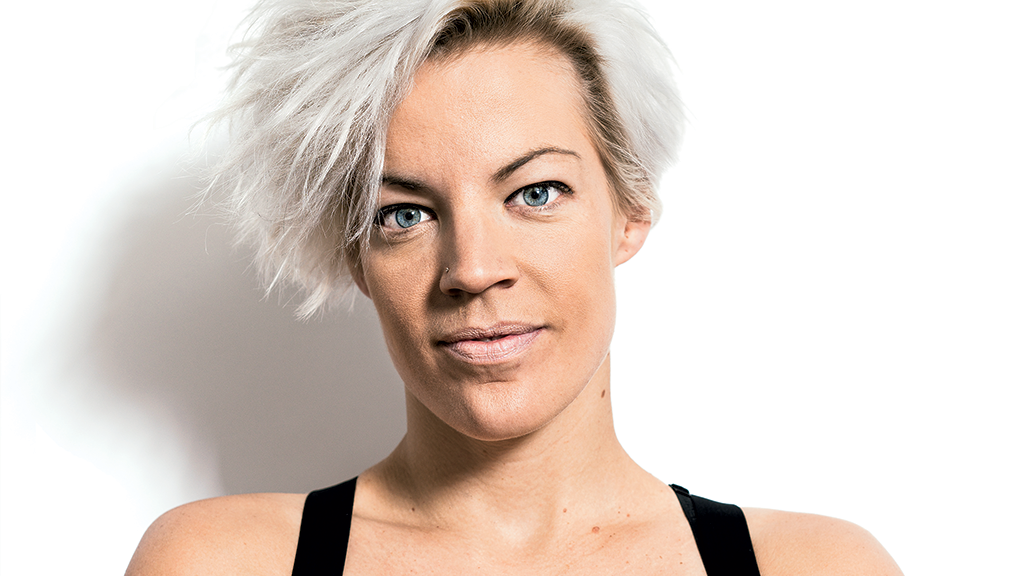You never know what serious athletes will do to win. Take Michael Phelps, for example. The swimmer with 16 Olympic medals under his belt eats an absurd 12,000 calories a day to keep up with his intense training regimen, and recently, he’s taken to sleeping in a chamber to prepare for the summer Olympics.
Sounds creepy, right? But Phelps’s method isn’t so crazy, after all. The contraption he snoozes in is an altitude chamber, which simulates an environment at high altitude. It’s especially helpful for athletes who live and train at sea level but have to compete in a high-altitude area for an upcoming competition.
After using altitude chambers for about nine years, two-time world champion triathlete and fitness coach Ken Mierke pretty much swears by the method. He has two altitude chambers and often encourages his athletes to use them in preparation for high-altitude competition.
The whole idea behind the chamber is the “live high, train low” method, he explains. For athletes who don’t live in a place like Denver, Colorado, running a race at 7,000 feet above sea level can feel like torture. Think shortness of breath, dehydration, dizziness, lack of appetite–the list goes on. In fact, training at high altitude won’t actually make your workouts easier, Mierke says. The decreased oxygen delivery means our bodies can’t exercise as hard aerobically as we would at sea level.
“If you go to altitude and work out for two hours, those two hours aren’t quite as good, but the benefits of the other 22 hours are greater,” he says. “So with the live high, train low method, you get the best of both worlds.”
The altitude chamber allows athletes who live at sea-level to simulate “living high.” While asleep in the chamber, an air unit pumps in up to 150 liters of air per minute through the chamber while exporting carbon dioxide. The body works harder to produce more red blood cells, increasing oxygen delivery to the muscles. After at least two weeks sleeping at high altitude, athletes typically see improved results in endurance performance, Mierke says.
In the altitude chamber, one sleeps for at least six hours each night at sea level, beginning at 5,000 feet. After several weeks at this altitude, Mierke recommends increasing the levels by 1,000 feet every few days until the desired altitude level is reached. Chambers can simulate up to 14,500 feet; Phelps said in a recent 60 Minutes interview that he’s currently sleeping at 8,500 to 9,000 feet.
Local professional triathlete and coach Margie Shapiro has used Mierke’s chamber twice, and says while she doesn’t have hard numbers to report, she felt the most difference in her running after about a week of sleeping in the tent-like structure. “I was just faster and sharper,” she recalls. “I certainly felt stronger in all of my workouts.”
Mierke says athletes may not even feel any difference in their performances until they look at their watch and notice they just ran three or four seconds faster than usual. While results vary among individuals, Mierke says the average improvement is 2 to 3 percent. “While that may not sound like much, 2 to 3 percent of an hour is 72 to 108 seconds, which is a huge amount for a hard-training triathlete,” Mierke wrote in an article for Triathlete magazine.
While using an altitude chamber may be easier than training at altitude, it certainly isn’t cheap. A typical unit costs approximately $8,000. Mierke rents his chambers for $400 for the first two weeks and $125 for every week thereafter.
Still, Mierke notes that while altitude simulation can help improve one’s performance, it won’t do all the work. “It’s a small but significant benefit,” he says. “It’s not some magic bullet to use instead of hard training.”



















